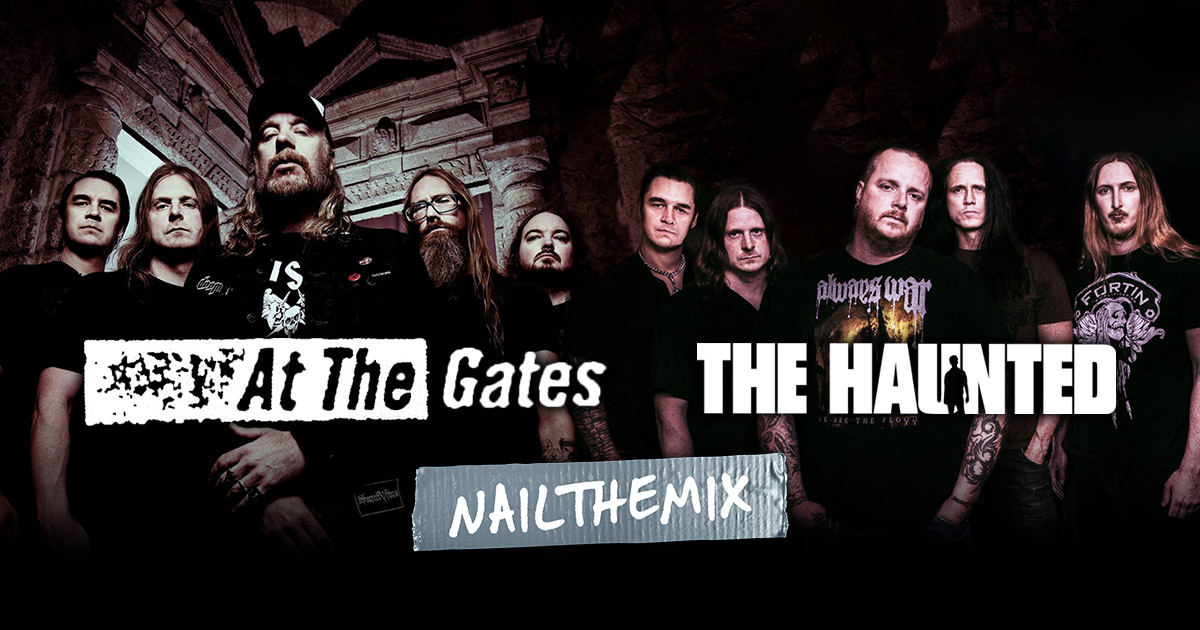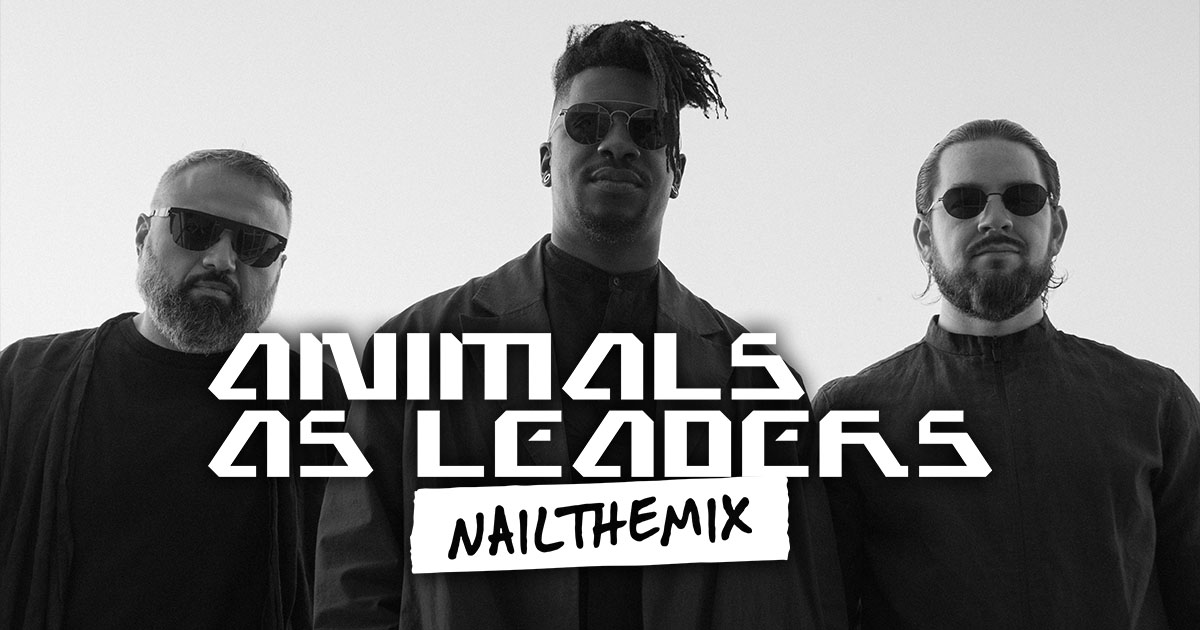
Mixing Amon Amarth’s Epic Lead Guitars with Jens Bogren
Nail The Mix Staff
Let’s talk about mixing guitar solos. They’re a massive part of what makes a metal track epic, but getting them to sit right is a delicate dance. Push them too loud, and they feel disconnected and distracting. Tuck them in too low, and you lose all the fire and intricate detail of the performance. Getting that perfect balance where the solo soars above the mix without overpowering it is a pro-level skill.
We got an inside look at how legendary producer Jens Bogren (Opeth, Arch Enemy, Sepultura) tackles the monumental lead guitars of Viking metal titans Amon Amarth. His approach is all about serving the song, and it’s a masterclass in making smart, deliberate decisions—and knowing when to leave things alone. Let’s dive into how he gets those solos to cut through.
Less is More: When to Ditch the Processing Chain
Here’s something you might not expect from a world-class producer: sometimes the best move is to do very little. Jens revealed a killer trick he often uses, which is running a lead guitar solo through his established vocal chain. It’s a great shortcut because a good vocal chain is already designed to make a mono source sit perfectly at the front of a busy mix, with just the right compression, EQ, and saturation.
But on this particular Amon Amarth track, it just didn’t work. After trying it out, he found that all that heavy processing was actually killing the vibe. The vocal chain made the guitar sound too “flatlined,” squashing the dynamics and taking away the definition and punch in the low-mids.
The big takeaway? He A/B’d it and the unprocessed guitar simply sounded better. It’s a crucial lesson in mixing: don’t force a technique just because it usually works. Trust your ears. If the raw track has the power and energy you need, your job is to preserve it, not process it to death. Sometimes the heaviest sounds need the lightest touch, especially when you’re trying to avoid the pitfalls of over-compressing your tracks and losing all life.
Surgical EQ for a Clean and Powerful Solo
Since the core tone of the guitar was already killer, Jens’s goal with EQ wasn’t to perform major surgery, but to do some precise cleanup. The aim was to remove any distracting frequencies that could clutter the solo or clash with the rest of the mix, letting the best parts of the performance shine.
Taming Resonances with Static EQ
One of the biggest challenges with high-gain guitars is managing nasty resonant frequencies. These are the little peaks that create a “boxy,” “honky,” or “fizzy” character. While a dynamic EQ can be great for taming these, Jens opted for a static approach, arguing that sometimes it just sounds better for the source.
He used Sonible’s smart:EQ to tackle this. Here’s the process:
- Learn the Track: You play the audio and hit the “learn” button in the plugin. It analyzes the entire frequency spectrum of the guitar solo.
- Create Custom Filters: Based on its analysis, the plugin identifies all the prominent resonant peaks.
- Apply Inverse EQ: Here’s the cool part. As you boost a frequency range with the main EQ curve, the plugin automatically creates narrow cuts at those pre-identified resonant spots within that range. It’s a smart and fast way to remove mud, rumble, or harshness without having to manually hunt for every single problem frequency.
This kind of precise, static cleanup ensures the solo is powerful and clear, not annoying. It’s a perfect example of the kinds of advanced EQ strategies for mixing modern metal that can elevate a mix.
Creating Space Without Sounding Like a “Toilet”
A dry solo can sound small and tacked-on. To give it that epic, soaring quality, you need to add some space with time-based effects. For the Amon Amarth leads, Jens reached for a pretty standard but effective combination.
The Standard Solo Effects Chain
The foundation for the solo’s space was built on two key elements:
- A Doubler: This gives the solo width and makes it sound bigger and more expansive in the stereo field without cluttering the center.
- Stereo Delays: These provide the depth and sense of echo, making the solo feel like it’s happening in a massive hall or some epic Viking landscape.
EQing Your Delays for a Warmer Sound
Here is where a simple effects chain becomes a pro-level mixing technique. Jens pointed out a common problem: sometimes, delays can create a “toilet sounding” effect. You know the one—a cheap, resonant, washy sound that’s more distracting than it is epic.
This is often caused by a buildup of mid-range frequencies in the delay trails. In this case, he identified a specific problem area around 1.1kHz that was creating that unwanted resonance in the wet signal.
The fix? Don’t just slap a delay on and call it a day. Process your effects returns. Go into your delay plugin (most modern ones have a built-in EQ section) or send your delay to its own aux track. Then, use an EQ to carve out the problem frequencies—like that 1.1kHz honk—from the delay signal only. This leaves the original dry guitar tone intact while making the echoes warmer, darker, and better integrated with the mix.
Watch The Pros Do It, Then Do It Yourself
These techniques—knowing when to back off, using smart EQs for cleanup, and processing your effects—are what take a mix from good to great. They show a deep understanding of how to make every element serve the song.
Seeing and hearing these moves in the context of a full mix is the absolute best way to learn. With Nail The Mix, you can watch world-class producers like Jens Bogren mix legendary tracks from scratch. You get the raw multitracks, so you can practice on the exact same files the pros are using.
Amon Amarth on Nail The Mix
Jens Bogren mixes "Twilight of the Thunder God"
Get the Session
If you want to see exactly how Jens Bogren balanced these guitars, treated the drums, and glued the entire massive Amon Amarth mix together, check out his full Nail The Mix session. You’ll see every plugin, every fader move, and hear every decision explained in detail. It’s time to unlock your sound and start mixing modern metal beyond presets.
Get access to the Amon Amarth multitracks and Jens Bogren’s complete mixing masterclass right here.







